As detailed in his book “Bengal to Barbados: A 100 Year History of East Indians in Barbados”, Sabir Nakhuda has traced over 100 years of East Indian migration to Barbados and community building on the island. The first documented migrant from India to Barbados arrived around 1910, Bashart Ali Dewan from West Bengal, India. The Barbados Museum & Historical Society has been engaged with the East Indian community for a number of years in several initiatives, and this project marks another milestone resulting in these sustained relationships. The Bengal to Barbados project showcases the diversity and impact of East Indian-Bajan identity. Migration stories from the regions of Bengal, Gujarat, Sindh, and South India are interwoven with broader themes such as cultural integration and influence, intangible cultural heritage and intergenerational experiences.
The community group leading this project is the Bengal to Barbados Foundation Inc. This Foundation, the first of its kind on the island, is founded by Sabir Nakhuda and Suleiman Bulbulia, two members of the East Indian community of Barbados with several years’ experience in documenting, recording, researching, and speaking on the East Indian community of Barbados. The Foundation aims to capture and convey by all possible means the history, legacy, and contribution of East Indians in Barbados.
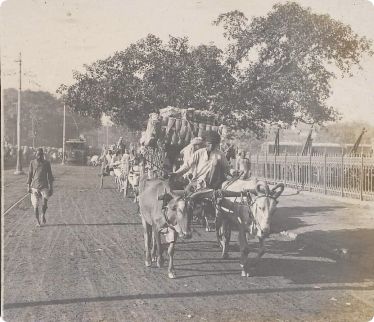

In the early 1900’s India and Barbados were both British colonies and it seemed natural that the first East Indian from West Bengal, seeking a better life abroad, found a home away from home in the “Little England” known as Barbados.
In the 19th and early 20th century India, conditions were very hard for many of India’s poor who mostly live in over 600,000 villages. For most of this population, acquiring land was one of the ways of getting wealth and status but unfortunately most of the communities were landless.
They lived in small villages where most of the lands were owned by the landlords, and they worked under terrible conditions for unscrupulous landlords and moneylenders.
There were some agrarian farmers who owned small parcels of land but there was always a fear of famine. Harvesting of bountiful crops mostly depended on the monsoon rain, and when the rains failed, famine became a reality. Sometimes too much rain also created problems for the small farmers. Various diseases such as cholera, smallpox and leprosy were endemic.
Thus, in India, conditions for the poorer classes were very hard and the future so very bleak, that many of them started to mortgage their small parcels of land, pawn their family jewelry (especially bride’s jewelry) to migrate to other countries in search of better lives for themselves and their families. They migrated to Mauritius, Fiji, South Africa, and other countries.
When slavery was abolished in the Caribbean around 1838, East Indians were brought by the British to the islands of Trinidad & Tobago, Jamaica, Grenada, St. Lucia, St. Vincent and to Guyana as indentured laborers. However, there were no East Indian indentured laborers brought to the island of Barbados.
The early East Indians who came and made Barbados their home, came independently and by accident. They came from three different parts of India: West Bengal, Gujarat, and Hyderabad-Sindh (Hyderabad-Sindh was a province of India before the partition in 1947). Subsequently, East Indian professionals from South India also came to Barbados.
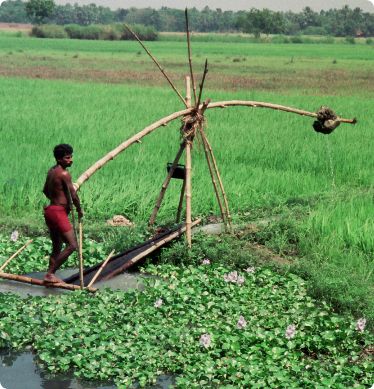
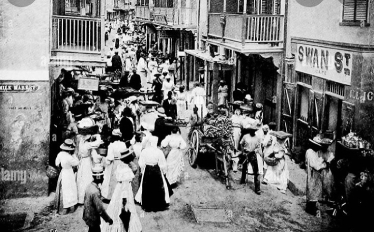
Bengal was divided following India’s Independence in 1947 into two separate entities. East Bengal became part of Pakistan (now known as Bangladesh) and West Bengal remained part of India.
It’s the center of rice cultivation as well as fine cotton, called ‘muslin’ and the world’s main source of jute fibre. Potatoes are also grown abundantly and there are many ponds (pokoor) in the villages for raising fish.
An agriculture-dependent state, West Bengal occupies only 2.9% of India’s land area, though it supports almost 8% of India’s population. It is the most densely populated state in India.
West Bengal’s capital Kolkata, also known as Calcutta under the British but always called ‘Kolkata’ in the native Bengali tongue. Kolkata nestles on the left bank of the river Bhagirathi (Hooghly) and is a typical riverine city surrounded by marshes, tidal creeks, mangrove swamps and wetlands. The district of Hooghly got its name from the town of Hooghli, which is situated on the west bank of the Hooghly River, about 40km north of Kolkata. Hooghly is one of the districts of the state of West Bengal in India and is also named after the Hooghly River.

The village of Jinpoor is in the district of Hooghly, about 80km from Kolkata. It is a typical Bengali village surrounded by rice paddies and potato fields with many coconut and banana trees. The whole place is very lush green with buffaloes and cattle roaming on the road. The roads are mostly of red clay and unpaved with a lot of bumps and humps. Most of the houses are made of red bricks with roofs made of straw, which deck both sides of the street. When a car or buffaloes cart passes on the street, red dust blows everywhere. Behind long lines of houses, there is a village pond (pokoor). There may be many ponds depending on the size of the village. The tradition of ponds is at the very heart of Bengali culture and way of life. Ponds can be used for bathing, washing wares, clothes, and a source of food by raising fish. Rice and fish are the staple food of the Bengalis.
Bashart Ali Dewan, the first known East Indian migrant to Barbados, Muslim by faith, was born in the village of Jinpoor, District Hooghly, to the late Munsi Dewan. The date of birth of Bashart Ali is not known but he left the village of Jinpoor around 1910 for Kolkata to board a ship for the West Indies. It is believed that he went to settle in Trinidad because his father-in-law, Sadimuddin Mullah of the village Sonka in District Hooghly had earlier migrated to Trinidad, married there, and had a son and daughter from a Trinidadian wife. However, Bashart Ali stayed in Trinidad for a short while and then came to Barbados. The year of his arrival to Barbados is believed to be sometime in 1910.
Bashart Ali Dewan, the first East Indian from the impoverished village of Jinpoor, West Bengal, set off with courage, vision and determination to an unknown future. He came to Barbados by chance and ultimately opened the way for other Bengalis and East Indians and to follow.
Mohammed Abdul Rohul Amin, a Bengali, came a few years after Bashart around 1913. After Rohul Amin’s arrival Bashart sent for his three brothers, Atar Ali, who was known as ‘hochen box’, Arshad Ali and Babujan Dewan, who came between 1915 and 1917.
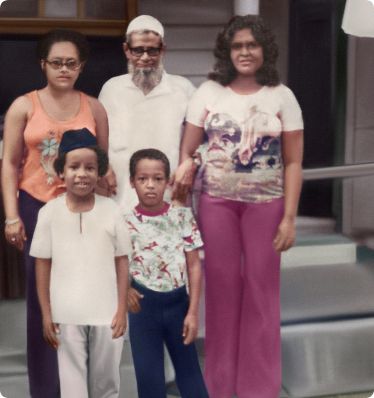
Other Bengalis followed in the 1920’s and 1930’s. In 1938, the sons of Arshad Ali, Akram Ali and Anwar Ali Dewan came to Barbados. There was no migration of Bengalis to Barbados after 1938. Apart from Ilyas Amin, son of Rohul Amin who came at the age of 12 years, most of the other Bengalis were in their late 30’s. They came from villages like Jinpoor, Prasadpur, Bamonjal, Ista and other surrounding villages of Hooghly District. Most of the Bengalis came on cargo ships boarded at Kolkata, paying between 400 and 450 rupees for their trip. There were no more than 2-dozen Bengalis on the island at that time. No Bengali women came to Barbados on their own or with their husbands.
Upon their arrival in Barbados, they were assisted by other Bengalis with boarding and lodging. They also helped the new arrivals with merchandise, to carry out their itinerant trading business and show them the route that they would have to take to peddle their wares. They stayed in Wellington’s Street, Milk Market, Lakes Folly, Chapman Street, Carrington Village, and other areas around St. Michael, living together, sharing rooms and meals, to save money to increase their business and to send money to their families, which they had left in India.
Life was hard, and after a lot of hard work, little money could be saved. They could not afford to call their wives and children to Barbados and had given up all hopes of doing so. As they were all Muslims and Islam allows them to have more than one wife, most of them married local women. Once they got married they moved out from living with other Bengalis and started to rent their own homes.
The early Bengalis had very little knowledge of their faith so they never taught it to their wives or children. The wives and children continued to practice Christianity while the Bengalis remained steadfast in Islam. They never imposed their faith (Islam) on their wives and children, who would go to church and follow all their Christian festivals, but the only exception was that pork could not be cooked or served in the house.
It is reported that the Bengalis fulfilled their duties as husbands and fathers and provided for their families. They were tolerant, kind and loving according to reports from their Barbadian families.
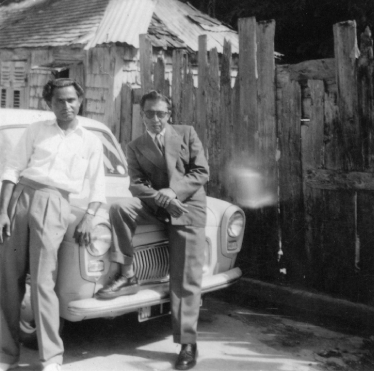
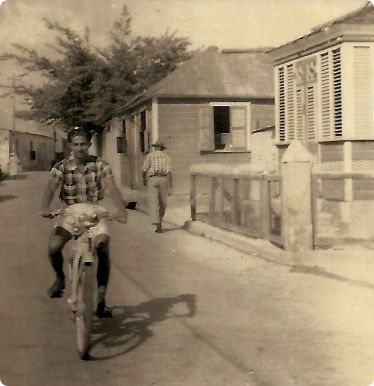
The Province of Gujarat gets its name from “Gujjar Rashta”, the land of the Gujjars, a migrant tribe that came to India in the 15th Century. The history of Gujarat dates back to 2,000 BC. Gujarat is situated on the western coast of the Indian Peninsula.
The Dutch, French, Portuguese, and the British established a base along the coast in the 17th Century for trading purposes. The British East India Company established its first quarters in India at Surat and Mumbai (Bombay) around the middle of the 16th Century. In 1960 Gujarat became the 15th state in the Indian Union.
Gujarat is the main producer of tobacco, cotton and groundnuts. It provides inputs for industries such as textiles, oil and soap. Gujarat is one of the most prosperous states in India. Gujaratis with their indomitable spirit have emerged as among the world’s most premier business communities.
Most of the people of Gujarat speak Gujarati, which belonged to the Indo-Aryan family. This language of Gujarati is derived from Sanskrit and other ancient languages.
Surat is one of the twenty-six districts of Gujarat. It is situated on the shore of the Arabian Sea and on the bank of the Tapi River. It is bordered by Navsari, Dang, Baruch and Narmada districts of Gujarat.
In 1573, it was conquered by the Muslim King, Akbar. It became an important trading port and became a departure point for the Muslim pilgrims who were going to Mecca for the Hajj.
Surat is now a major industrial centre, especially for the manufacture of textiles, chemicals, and the processing of the finishing of diamonds.
It is from the villages of Kaphleta, Lajpur, Dabhel, Telada, Bardoli, Kathor, Tadkeshwar, and several others which surround Surat that the Gujaratis have made Barbados their home.
Like the Bengalis, the Gujaratis migration to Barbados was also accidental. There were advertisements in the newspaper in Gujarat, seeking workers to go to Brazil to cut timber. In 1928, three men, Aswat from the village of Takoly, Gharda from Lajpur and Ismael Mamadh from Kaphleta, set out on a cargo boat from Mumbai (Bombay).
When they reached French Guiana, they did not have enough money to continue their journey to Brazil. They were told that there were many East Indians in British Guiana (Guyana) and that it would be better for them to go there. Again, there was not enough funds for them to travel so the two, Gharda and Aswat, set off for British Guiana and left Mamadh in French Guiana.

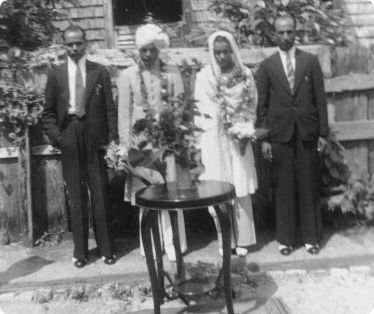
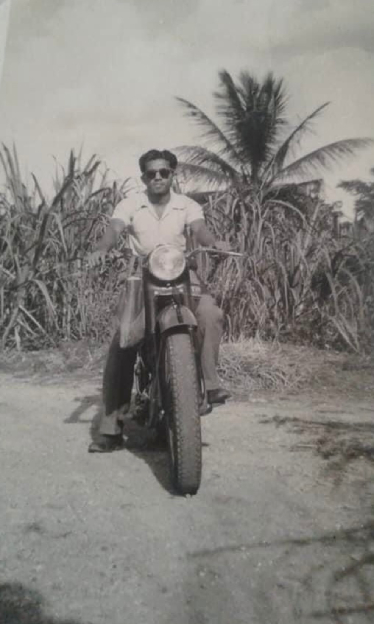 Sometime subsequently in 1928, Hafiz Suleiman Kasooji, Moosa Patel and Ibrahim Bulbulia from the village of Kaphleta, boarded a ship at Mumbai (Bombay) to go to Brazil but also ended up like the previous Gujaratis, in French Guiana, where they met Ismael Mamadh. The four of them decided to go to British Guiana, where they received a warm welcome by the Muslims there because Suleiman Kasooji was a ‘Hafiz’ (one who had memorized the Holy Qur’an). The Guyanese wanted to make a collection for them so that they could return to India but Moosa Patel said they left India for a better life for them and their families, and had no intention of returning. They wanted to start some kind of business and were told that they can make good money by taking coal and coconuts to Barbados on a schooner.
Sometime subsequently in 1928, Hafiz Suleiman Kasooji, Moosa Patel and Ibrahim Bulbulia from the village of Kaphleta, boarded a ship at Mumbai (Bombay) to go to Brazil but also ended up like the previous Gujaratis, in French Guiana, where they met Ismael Mamadh. The four of them decided to go to British Guiana, where they received a warm welcome by the Muslims there because Suleiman Kasooji was a ‘Hafiz’ (one who had memorized the Holy Qur’an). The Guyanese wanted to make a collection for them so that they could return to India but Moosa Patel said they left India for a better life for them and their families, and had no intention of returning. They wanted to start some kind of business and were told that they can make good money by taking coal and coconuts to Barbados on a schooner.
In February 1929, they travelled to Barbados. There, they met the Bengalis in Bridgetown and were very happy to see their fellow countrymen from India. Some of the Bengalis at that time were living in Swan Street and Tudor Street. When the Gujaratis went to visit them, they saw chickens tied to the bedpost. They felt that the Bengalis were doing well in their business to be eating chicken, as chicken was a luxury for poor villagers in India. They asked the Bengalis what type of work they were doing and were told that they were going door to door selling various merchandise. The Gujaratis decided to settle in Barbados and stayed with the Bengalis in Swan Street (Milk Market).
The Gujaratis started their itinerant business along with the Bengalis. The Gujaratis would teach the Bengalis basic Islamic knowledge after work at night under the kerosene lamp. And they encouraged the other Gujaratis to come to Barbados by sending entrance permits for them.
On 13th August 1930, another group of four Gujaratis, Moosaji Daya, Suleiman Samrodia, Barber Ahmed and Suleiman Bhikoo came to Barbados.
Like the Bengalis before them, many had to sell or mortgage their family land and pawn their family jewelry to the moneylenders so that they could come to Barbados. Most of them could not speak English and prior to coming to Barbados, most of them had only ever visited nearby villages and towns. They were not exposed to city life and had very little knowledge of the outside world. Most of them only had primary education though they were well educated in their faith.
Like the Bengalis, the Gujaratis would work hard and for long periods of time. They would work for 10-12 hours, six days a week. Some would ride secondhand bicycles with carriers for their suitcases while others would walk around the St. Michael area. Some of them would take the train or various buses to the countryside. The bus driver would drop them near a village, and they would walk around and credit (trust) their merchandise, which was mostly ladies and gents raw materials.
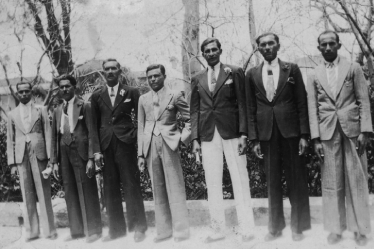
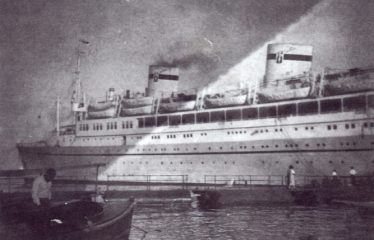
The new immigrant would be assisted by family members, friends, or other members from his village with boarding and lodging and would also help him to start his itinerant business.
He would be given a suite case and few pieces of ladies and gents raw materials (2,2 1/2 or 3 yards) and a paper with the price of each piece in English and Gujarati would be placed in the plastic bag. He would be told which areas to go to at the beginning to sell his items but later he would choose his own areas as his business grows and he becomes more familiar with various part of the island. The buses to the countryside use to only run once or twice a day.
They were faced with many obstacles daily. In India they worked the land and had no experience in door-to-door selling on credit basis. Some of them knew very little English while others didn’t know any English at all. They would use signs and gestures to communicate with their customers.
In the early days, (prior to 1966), Barbados’ working class could not get credit from the Bridgetown merchants, and it was difficult to obtain loans from the commercial banks because the ‘working grass root people’ found work on seasonal basis.
Domestics and other low earning jobs were not plentiful and the pay was not enough to support many families.
The plantation workers could not come to town because of their work, so the itinerant traders would not only go to their homes but also to the sugar factories, cane fields and other places of work to credit the various items they need.
The itinerant traders would buy their goods from the merchants in Bridgetown and after putting on their markup, trust it to the Barbadians. The terms of the credit were easy, and he would pass every week to collect twenty-five cents or fifty cents on the account but during the crop season they would pay a little more on the card. During the week Monday to Thursday the salesman would collect ten to fifteen dollars a day but on weekends Saturday and Sunday he would collect about fifty dollars.
The Bengalis and Gujaratis can be considered as the first business group to provide credit to the working-class people of Barbados. Several teachers, doctors, lawyers and even politicians would speak of the fact that their first pair of shoes or school uniform came from the itinerant trader, as their parents could not afford to pay cash for the items.
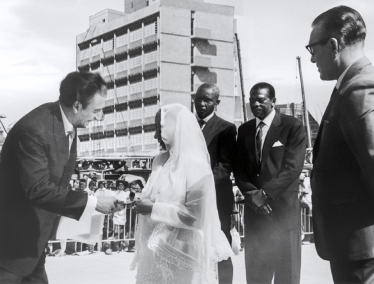

The province of Sindh is the second largest province in Pakistan with its capital Karachi. Sindh was a province of India prior to the partition in 1947.
Sindh is basically an agrarian province and the Indus River is by far the most important river of the province. The classical name of the river was ‘Sindhu’ (Sanskrit for an ocean) and Sindh province was created and sustained by the river, without which would be a desert. Cotton, rice, wheat and sugar cane are the main crops produced in the Sindh. Rice is by far the most important crop cultivated in Sindh.
The Sindhi language has pure Sanskrit basis. Hindu Sindhis tend to have Hindu surnames that end in ‘-ani’ (a variant of ’anshi’ derived from Sanskrit word ‘ansh’, which means ‘descended from’). The first part of a Hindu Sindhi surname is usually derived from the name of an ancestor. Muslim Sindhis tend to have traditional Muslim surnames, sometimes with localized variants. Nearly 40% of Sindhis have ‘Baloch’ tribal names.
In the early parts of the twentieth century, Hindu Sindhis, mostly from Hyderabad, started to migrate to different parts of the world, including Indonesia, Vietnam, Hong Kong and Singapore. Some even migrated to Bermuda and Panama.
Before the partition in 1947, 25% of the population of Sindh were Hindus. Most of the Hindu Sindhis were city dwellers and they contributed significantly to the economy of Sindh. There were good relationships between the Hindu and Muslim Sindhis but after the partition, when the Muslim refugees from India started to arrive in Sindh, the Hindu Sindhis fled to India and other parts of the world, leaving everything behind, including their homes.
Like the Bengalis and Gujaratis, the migration of Sindhis from the province Hyderabad Sindh, which was a province of India before the partition, was accidental.
The first Sindhi to establish himself, Jivatram Atmaram Thani came to Barbados in 1932. He stayed at a boarding house in Bay Street. He opened the first popular ‘Hindu’ store in McGregor Street, Bridgetown. The store was situated opposite the former Goddard Ice House, now the Bank Of Nova Scotia in Broad Street. Jivatram was later joined by his nephew Bhagwan, who stayed for a while and later returned to India.
In 1937, Jivatram returned to India where he fell ill and died within a few weeks. Jivatram opened the way for other Sindhis to come to Barbados, open their businesses and make economic and social contributions to Barbados.
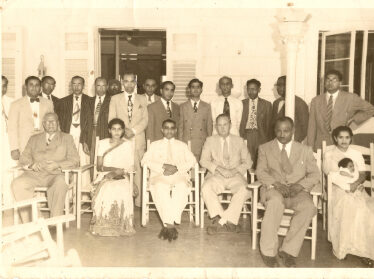
On August 7th 1937, Dayaldas Atmaram Thani, now known as (Dada) D. A Thani, arrived on the ship “Simon Bolivar”. D. A Thani stayed in Bay Street and managed the business left by his late brother Jivatram. In 1938, Thakurdas came to assist D. A Thani, in the running of the business. D.A Thani’s younger brother, Nathurmal Thani, arrived in Barbados in 1939 with £900, the two brothers opened a dry goods store in Prince Williams Street called Kashmir Bazaar. They later opened a second store called the Society Store. During the Second World War it was very difficult to obtain goods and to maintain a reasonable amount of stock in the store and so both stores were closed.
At the same time, the original store in McGregor Street, which was started by Jivatram and managed by Thakurdas, was also closed after it caught on fire. Thakurdas, who was then residing alone in Baxter’s Road, died. He was the first Sindhi to be buried in Barbados.
Other members of the Thani family started arriving in Barbados, beginning with the Kessaram Family and was later followed by the in-laws of both the Thanis and Kessarams. Most of the Sindhis are the extensions of the Kessaram and Thani families with the exception of the Chatrani Family, which started when Arjan Chatrani arrived in Barbados in the late 1940’s.
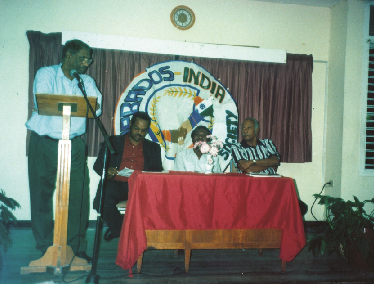
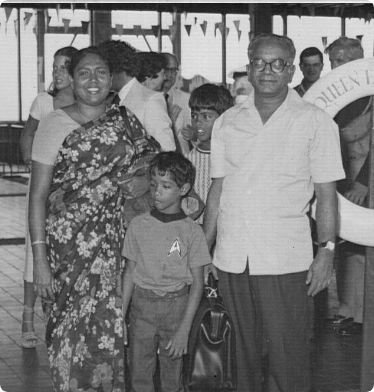
South India comprises of Andhra Pradesh, Tamil Nadu, Kerala and Karnataka.
Andhra Pradesh is one of the 28 states in India. It is situated on the South Eastern Coast of India. It is India’s fourth largest state and fifth largest by population; It’s capital is Hydrabad.
Andhra Pradesh is historically called the “Rice Bowl” of India. More than 77% of its crop is rice. The Primary officially language is Telugu, which is spoken by about 83%of the population while Urdu is the secondary language.
Tamil Nadu is the eleventh state in India and it is the most Urbanised state in India. Its official language is Tamil, which has been in use for over two thousand years. Tamil Nadu is one of the most literate states in India with a literacy rate of over 80% in 2011.
Tamil is the only official language of Tamil Nadu. English is also used.
Kerala is an Indian state located on the Malabar Coast of South India. It is bordered by Karnataka to the North and Northeast, Tamil Nadu to the South and Southeast and the Arabian Sea on the West. The city of Thiruvananthapuram is the state capital. The official language is Malayan.
Karnataka is a state in South West India; Bangalore is the capital city. Bangalore is at the forefront of the rapid economic and technological development that India is experiencing.
South Indian Professionals are latecomers to Barbados. They came mainly from the southeast and southwest of India. About 80% of the South Indians in Barbados came from Andhra Pradesh and Tamil Nadu while others came from Kerala and Karnataka.
South Indian professionals, mainly doctors, started coming to Barbados, on a contractual basis from 1968. In 1975, there were about fifty South Indian doctors working at the Queen Elizabeth Hospital. About 30% of the doctors where South Indians; most of the junior doctors.
There were many South Indian doctors who pass through the Barbados Medical System over the years. Many of them worked as Junior Doctors and later moved to United States, England, Bahamas, and other Caribbean Islands because they didn’t have post-graduate qualification to become consultants. There were some who came with post-graduate qualifications from India and who secured the post of consultants at the hospital while others like Dr. Gajapathy Asokan did the post graduate degree at the University of the West Indies and became a consultant at the psychiatric hospital.
There are over one hundred South Indians in Barbados but all of them are not doctors. They are involved in various professions like Accountants, I.T Specialists, Banking and Professors at the University of the West Indies.
Most of the South Indians are immigrants or citizens of Barbados with many having children born in Barbados. Many have purchased homes in Barbados with the view of settling here. They have put great emphasis in educating their children Many of the “Bajan South Indians” have become doctors and engineers. Some have stayed in Barbados, making their contribution to Barbados.
Many South Indians know their mother tongue; be it Telugu, Tamil, Malayalam or Kannada. Most of them do not speak Hindi; the national language of India but all of them speak English fluently. As they do not know each other’s mother tongue, they converse with each other in English. Most of them also teach their mother tongue as they consider it important to retain their language, culture, and religion.
In 2022, the National Cultural Foundation commissioned a mural on Pinfold Street in Bridgetown, to tell the story of the East Indian community in Barbados. Designed by Rasheed Boodhoo, with support from Tracy Greenidge, Glenroy Jordan and Neville Legall, the mural contains the following components:
A depiction of the first known East-Indian migrant to Barbados, who started his career as an itinerant tradesman, peddling his goods across the countryside of Barbados, on foot and on bicycle with his suitcase, which has now become iconic. This form of trade remains a feature on the economic landscape of Barbados for over 100 years.
Swan Street, showcasing some of the names of well-known East-Indian owned stores, and representing the very important role of East-Indian merchants to business in Bridgetown over the years.
The drum, a cultural feature of some East-Indian communities in their festivities.
The Speaker’s Chair, an enduring and important tangible symbol of the bonds that bind India and Barbados. Gifted to the House of Parliament on Barbados’ Independence in 1966 from the Indian Government.
The male and female medical practitioners depicted, represent the important role Indians, especially south Indians, have had to Barbados’ medical infrastructure for decades.
Cricket, a sport widely accepted and played by Barbadians and Indians alike, bringing together diverse communities.
Food, highlighted by samosas, rotis and Indian sweets, a culinary gift to Barbados from the Indian community.
The family, cornerstone of both Indian and Barbadian families, is represented by father and son; mother and daughter; in traditional dress moving together as one unit.
The henna-tattooed hands feature an art form associated with Indian culture and utilized by Indians of all backgrounds during festivities. The henna pattern emanating from the hands pervades the mural symbolizing its enduring presence throughout the ages.
The looming female figure is clothed in flowing traditional wear in the national colors of both India and Barbados. This colorful outfit reflects the bright colors often associated with Indian dress.

Detail of 2022 NCF commissioned Mural, designed by artist Rasheed Boodhoo
The Bengal to Barbados digital project and exhibition is grateful for all the community contributions as we continue to develop and share! For more information on how to support, contact the Bengal to Barbados Foundation Inc at bengaltobarbados@hotmail.com